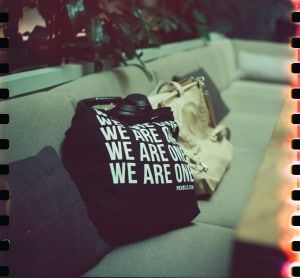How Responsible Businesses Should Think About Merchandising

Merchandising is a popular tool for many businesses to use, and for quite clear reasons. Not only can it potentially provide an extra revenue stream, but it may help you spread branding with products that speak to the value of your brand. For instance, bringing merchandise to a convention you’re attending can, in effect, help you spread your marketed brand presence around the entire event, especially if you give away certain items for free.
Yet it’s also true that merchandised products should be considered from a sustainability perspective in order to responsibly and ethically design such merchandise. Handcrafted items can be helpful from time to time, especially if you’re a small firm where professional printing or transfer paper can be useful, but how should you think about these problems at scale?
In this post, we hope to explore this topic and see if we can lessen our impact on the production cycle while also chasing possible sustainability efforts . This is a great way to redefine and represent the spirit and values of your brand – everything that merchandise should represent.
Let’s get started:
High-Quality Printing Companies
High-quality printing companies can provide you with a great means of making sure your branded approach works well, and that each piece of merch is undeniably and proudly yours. In some cases, this might include embroidery, such as at the top of baseball caps. The higher quality you can print, the better the merchandise itself will be, and that itself will ensure the item is used for a much longer amount of time.
Never Create Disposable Goods
It’s important to never create disposable goods that can be thrown away easily or thrown into landfills within a matter of days. For instance, instead of having five thousand small pens made for your attendance at a convention, perhaps you could make two hundred tote bags that give the guests a higher-quality item they may even begin to use in their personal life. This has the added benefit of being the container in which other merchandised options given by other brands will be placed, allowing you to supersede the branding therein. It’s not hard to see just how worthwhile that can be, as this speaks to the confidence and sustainable values of your brand. Always source proper sustainable suppliers and practices to support.
Change For Good
It can be healthy to match every sale of a merchandised item with a goodwill gesture. If someone purchases a piece of branded merchandise from your store, for example, you might decide to donate towards planting a tree in a foreign country. This not only encourages sales thanks to the ‘conscious factor’ you provide with every purchase, but it can help limit the impact of creating a humble merch library in the first place. With a cause you stand behind, this could be a fruitful and effective positive step.
With this advice, we hope you, as a responsible business, can make the most of merchandising.


